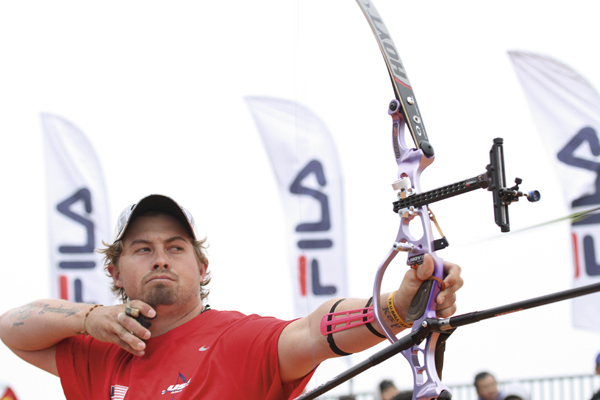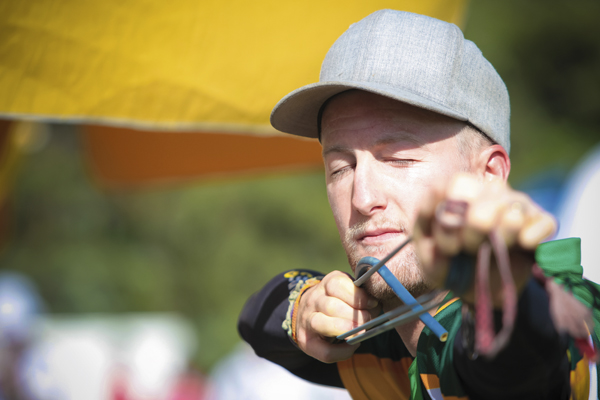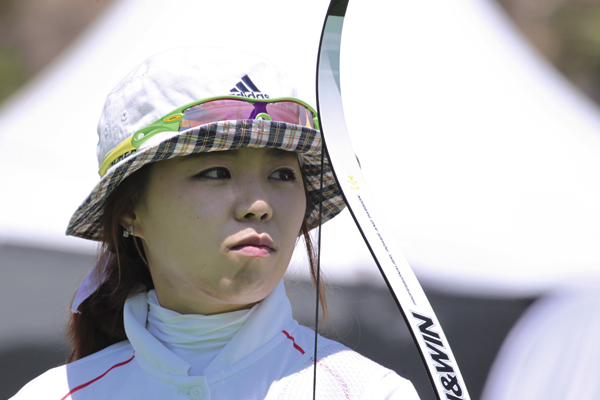Craig Johnson explains how the brain learns in co-ordination with muscle systems, and how archers can use that to their advantage in training
I have previously given an overview of the nervous system and looked at feedback in the motor system, but here I want to examine several aspects of motor learning that are of use to the archer.
Motor Learning
Specific motor activities occur due to the activity of groups of neurones working together. The motor system learns by making it easier for groups of neurones that have activated together once to activate together in the future (the fire together, wire together principle). This means that it is easier to repeat an action than to carry it out for the first time. The more an action is repeated, the easier it becomes until it is automatic. We call this repetition practice, and because the motor system will learn to repeat whatever it does often, it is important that whenever we practise we do so with correct form.
Special Skills
Particular activities that are carried out repeatedly and in a very precise way in sports are known as special skills. Examples of these include baseball pitching and basketball shooting from the penalty line. Special skills are specifically practised during training and when the ability of top athletes in these special skills is measured, they perform better at them than expected from their general performance. For example, as the distance from the hoop increases, the proportion of shots that a basketball player scores reduces. All players score better at 10 feet than they do at 20 feet, but a league basketball player will usually perform better at 15 feet than 10 feet because this is the penalty shot distance and it is specifically practised. During a game, baseball pitchers pitch over a distance of 60 feet and six inches and are significantly more accurate at this distance than at either 59 feet six inches or 61 feet six inches. This improved performance at the practised distance is not seen if important features of the game are altered. For example, the basketball improvement at the penalty distance will not be seen if the player is given an unusually heavy or light ball to shoot with.
Archery is often called a strict motor sport, meaning that the motion of shooting is always the same whatever the distance from the target, but actually shooting at different distances feels very different. This is especially the case when comparing the difference between indoor and long-range outdoor target competitions. Indoors, the sight is near the top of its range and the arrow seems to hit the target almost before it is released, but outdoors the sight is much lower and the arrow arcs gracefully into the distance before striking the target well after the shot is completed. Some archers even use different equipment indoors and outdoors. When practising, we should aim to develop the distances that we shoot in competition as ‘special skill’ distances and practice these much more often than other distances. When shooting a competition round with unusual distances, it is important to incorporate these unusual distances into training prior to the competition in order to be familiar with the feel of the shot at that distance right from the start of the competition.
Visualisation
This is the act of imagining taking a shot without actually doing so. The archer goes through the mental motion of shooting and practices what each part of the shot feels like as they go through their routine. This can be done anywhere and can be used to contribute to training when it is not possible to get to the archery range. It has been shown that good visualisation contributes to the motor learning of almost the whole motor system and, when used properly, it can help to consolidate good form much more quickly than shooting alone. It’s also an advantage that visualisation doesn’t cause muscle fatigue, though it should not be overdone as the act of imagining motor activity can be very mentally tiring. There are two important rules to visualisation.
Firstly, the visualisation should be subjective: When visualising the archer should always imagine that they are taking the shot themselves. They should feel the tension of the bow and its movement as the arrow is released. Imagining watching themselves from behind and above is not proper visualisation and does not contribute to motor learning.
Secondly, the form and shot should be good: it is really important to always exactly visualise a good shot made with correct form. The motor system will learn to do whatever is repeated often and this is as true for visualisation as it is for training. An archer that cannot consistently visualise with good form cannot expect to consistently shoot with good form. As discussed above, a good shot is one that feels right, not necessarily one where the arrow hits the gold. When visualising it is more important that the imagined shot feels good than that the imagined arrow hits the centre of the target. Some archers perform visualisations where the arrow fades away prior to hitting the target. This can be beneficial as it teachers the archer not to rely on the score as part of their shooting routine. It can help with relaxation during competition shooting, and ultimately improve competition scores.
Still Eye
A number of studies have investigated sports where motor activity is voluntarily initiated (such as shooting, and billiards) rather than being triggered by external events (like tennis and cricket). Researchers have looked to find the hallmarks of expert exponents of these sports compared to beginners or relative novices. One of the features of an expert of this kind of sport is known as ‘still eye’. It is a period of time prior to the start of the motor activity in which the eyes are static and fixed on one point in space. Experts tend to have longer periods of still eye than those less accomplished in a sport.
The ‘still eye’ period is the time when the motor controller is accessing the stored program and preparing the motor system to carry out the activity. It would appear that experts have a more precise motor program than novices, and so this takes longer to load and prepare. Electrical changes related to a motor activity can be seen in the cerebellum (the area of the brain that stores motor programs) up to two seconds before the physical activity starts. Artificially increasing the period of stillness prior to a shot beyond that required will not improve the shot, but it is important to take account of the need for this time of stillness in order that the shot does not feel rushed and is as good as it can be. Archers report different mental activities during this time such as ‘clearing the mind’, or ‘focusing in on the gold’, but whatever the thought process used, the archer should build this time into their routine and never shoot in a hurried manner.




